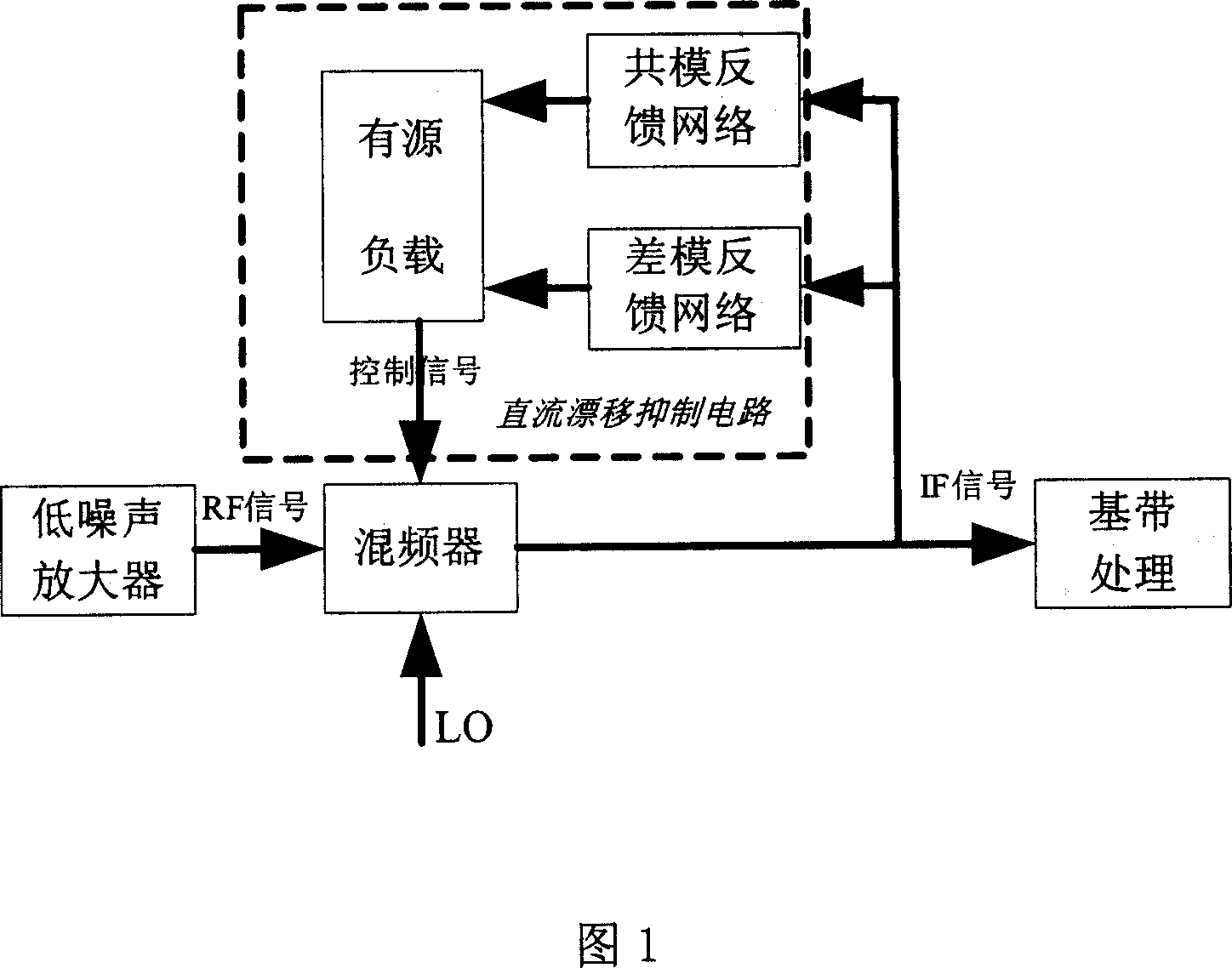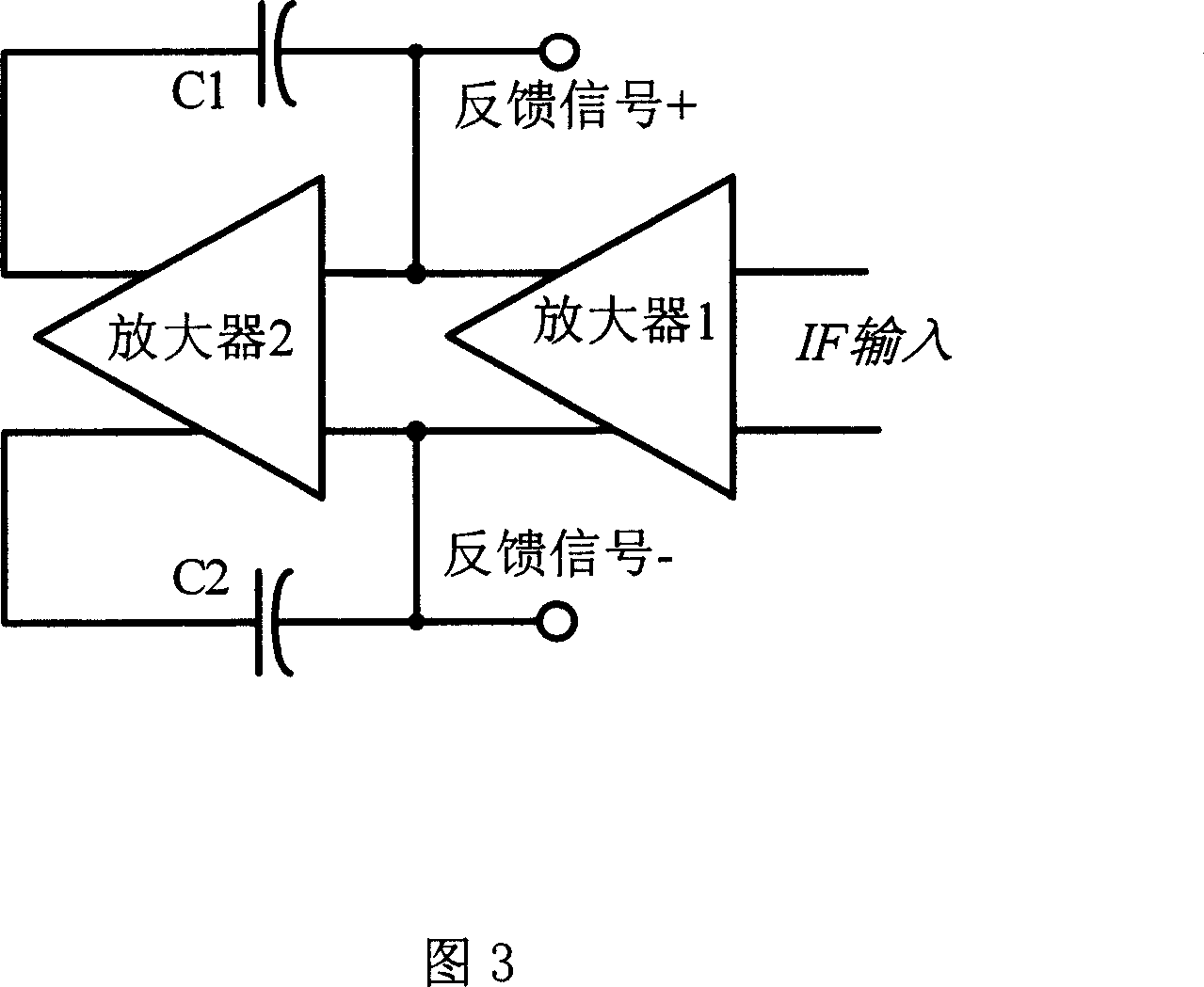Method for solving DC-offset of zero intermediate frequency receiver and circuit thereof
A zero-IF receiver, DC drift technology, applied in demodulation, electrical components, modulation transfer, etc., can solve problems affecting baseband signal processing, functional unit saturation, etc., to suppress DC drift, improve performance, and reduce area.
- Summary
- Abstract
- Description
- Claims
- Application Information
AI Technical Summary
Problems solved by technology
Method used
Image
Examples
Embodiment Construction
[0029] As shown in Figure 1: Zero-IF receiver with DC drift suppression circuit includes: low noise amplifier, mixer, DC drift suppression circuit and baseband processor. The DC drift suppression circuit includes a differential mode feedback network, a common mode feedback network and an active load. The RF signal of the low noise amplifier is input to the mixer, and the output signal IF signal of the mixer is output to the differential mode feedback network, the common mode feedback network, and the baseband processor.
[0030] The design steps of the zero-IF receiver DC drift suppression circuit are as follows:
[0031] Step 1: Design a Gilbert double-balanced mixer unit and add an active load at the output load.
[0032] 1. Determine the mixer unit;
[0033] 2. Determine the indicators of the mixer design;
[0034] 3. Determine the active load, which is determined by the amplitude of the mixer output and the requirements for the conversion gain of the mixer; the active l...
PUM
 Login to View More
Login to View More Abstract
Description
Claims
Application Information
 Login to View More
Login to View More - R&D Engineer
- R&D Manager
- IP Professional
- Industry Leading Data Capabilities
- Powerful AI technology
- Patent DNA Extraction
Browse by: Latest US Patents, China's latest patents, Technical Efficacy Thesaurus, Application Domain, Technology Topic, Popular Technical Reports.
© 2024 PatSnap. All rights reserved.Legal|Privacy policy|Modern Slavery Act Transparency Statement|Sitemap|About US| Contact US: help@patsnap.com










